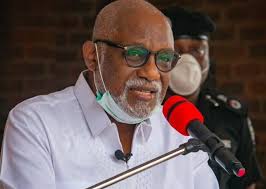Structure of Western Nigeria Self Rule (1952 to 1966)

Structure of Western Nigeria Self Rule (1952 to 1966)
What many Yoruba do not recognize is that prior to Nigeria’s independence in 1960, the Yoruba people had rejected the political leadership of Britain over the Yoruba Country as far back as 1952 in what was known then as self-rule.
Immediately the people of Western Nigeria attained self-rule in 1952, the political, economic and administrative boundaries, initiated by the Action Group, (AG) led by Chief Obafemi Awolowo, of the Western Nigeria country were separated into the following making it easy for effective administration and human development :
Political Boundaries:
- Regional
- Provincial
- Divisional
- District and
- Native Authorities
The Regional Government was called the Western Region of Nigeria. The Region had the following Provinces:
PROVINCIAL BOUNDARIES:
- Oyo Province
- Ibadan Province
- Abeokuta Province
- Lagos Colony
- Ijebu Province
- Oyo-Ife Province
- Ondo Province
- Benin Province and
- Ilorin and Kabba Province
Added here, Ilorin and Kabba Province as part of the Western Region of Nigeria because in 1952, referendums were held in the areas and the people voted to be part of the Western Region of Nigeria, the British colonial government handed over the results of the referendums to Tafawa Balewa and Nnamdi Azikwe in 1960, being non-Yoruba but Prime Minister and Governor-General of Nigeria respectively, denied the Yoruba people in Ilorin and Kabba their fundamental human right to be part of their kith and kin in Western Region of Nigeria.
Notwithstanding, however, the above 9 provinces were further divided into the following divisional boundaries.
DIVISIONAL BOUNDARIES:
A. Oyo Province had only one divisional boundary: Oyo Division.
B. Ibadan Province had two divisional boundaries: Osun and Ibadan Divisions.
C. Abeokuta Province had two divisional boundaries: Egbado and Egba Divisions.
D. Lagos Province was called Lagos Colony.
E. Ijebu Province had two divisional boundaries: Remo and Ijebu-Ode Divisions.
F. Oyo-Ife Province had two divisional boundaries: Ife and Ilesha Divisions.
G. Ondo Province had four divisional boundaries: Ekiti, Owo, Ondo and Okitipupa Divisions.
H. Benin Province had three divisional boundaries: Afenmai, Benin and Delta Divisions.
I. Ilorin and Kabba Province had two divisional boundaries: Ilorin and Kabba Divisions.
The above listed 19 Divisions were each further divided into districts. For want of space, I will concern myself with only the Districts of 5 out of the 19 Divisions.
The 5 Districts are taken from the Benin and Ilorin/Kabba Provinces.
DISTRICT BOUNDARIES:
A. The Benin Province had Afenmai Division, Benin Division and Delta Division.
- Afenmai Division had Akoko-Edo, Ivbiosakon, and Etsako Districts.
- Benin Division had Benin, Ishan, and Asaba Districts.
- Delta Division had Warri, Urhobo, Aboh and Western Ijaw Districts.
B. The Ilorin/Kabba Province had Ilorin Division and Kabba Division.
- Ilorin Division had Ilorin, Igbomina, Ibolo and part of Ekiti Districts.
- Kabba Division had Yagba West, Yagba East, Ijumu and Kabba Districts.
To complete the Yoruba Western Region political boundaries, the districts were further divided into Native Authorities.
In total, the Yoruba Country had 1 Autonomous Region, 9 Provinces, 19 Divisions, more than 40 Districts and over 200 Native Authorities as far back as 1952.
This political system and boundaries under the exceptional leadership of our topmost statesman of the time –Chief Obafemi Awolowo – served the Yoruba people with the very best government in the whole of Africa. Under their leadership, the Western Region became the pacesetter in virtually all facets of modern development. As examples, the Region developed programmes that empowered Yoruba people to become some of the most productive in Africa. The Region became “First in Africa”, until the Ibo, using the military, suspended the system and the Hausa/Fulani, also using the military, instituted a unitary presidential system, an unworkable political system in 1966. Culled from National Archives.



